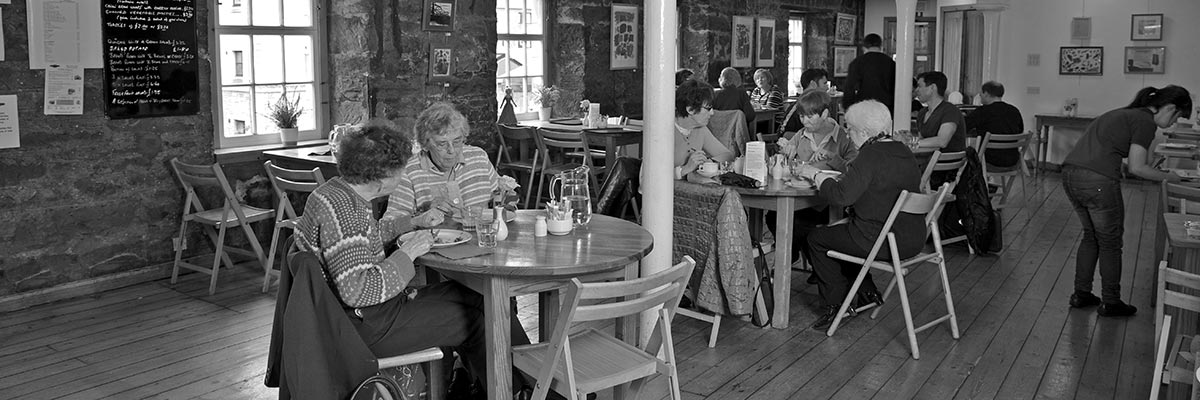Looking back over the past 50 years, I wish I could say that I have seen significant improvements in the quality of life of people with learning disabilities. Let me give a number of examples where improvements have not taken place.
Schools: ideals against reality
Witness what happened with the Warnock Report published in 1978.
Mary Warnock tried to establish the facts concerning special educational provision for children and young people with special needs but was constrained by the Department of Education, which provided next to no funding for research and deliberately restricted access to schools and other facilities.
This was in marked contrast to the 1964 Plowden Report on primary education and the 1963 Robbins Report on higher education.
In exercising her role as chair, Warnock displayed not only a high degree of naivety but also was consistently outmanoeuvred by the Department of Education.
Not long after the publication of her report, I invited Warnock to address a group of headteachers and deputy headteachers of special schools who were attending an in-service course in a college of higher education in the south of England.
My abiding memory of that occasion is the look of bewilderment on the faces of her audience as she sought to explain some of the reasoning behind the report’s recommendations. It quickly became apparent to her audience of experienced practitioners that she had little idea of what went on in special schools.
Some years later, she would publicly and belatedly acknowledge that much of the content of her report was “naive to the point of idiocy” – a conclusion drawn by the headteachers much earlier.
Warnock was later to argue that her committee had become so enamoured with its own ideals that it had never thought to question whether local authorities would be sufficiently motivated to take on the task of meeting pupils’ special educational needs in mainstream schools.
The pressure on her committee to support the policy of inclusion caused confusion – and pupils with special needs became unwitting casualties of this.
Warnock concluded that support for the policy of inclusion “sprang from hearts in the right place” but acknowledged its implementation had a disastrous legacy.
The credulity of that same group of headteachers was further strained when, on a later occasion, they were addressed by Sally Tomlinson, a Marxist academic who had asserted in her book A Sociology of Special Education that special schools constituted an integral part of a socially stratified educational system.
The inevitable logic of her argument was that the system should be de-stratified which meant the closure of special schools. Unsurprisingly, her audience was not sympathetic to this argument – but what they found bewildering was her inability to defend her central thesis when subjected to questioning.
Antagonistic action
This lack of attention to the concerns of people with learning disabilities led to the birth of the Direct Action Network (DAN) in 1989.
DAN members sought to portray their organisation as following in the footsteps of the 1960s civil rights movement. While their principal targets were the major disability charities, such as Mencap, the Spastics Society (as Scope was known) and the Leonard Cheshire Foundation, broad DAN targets included professionals, parents, special schools and residential care settings of any kind.
Particularly disturbing were the depth and intensity of the antipathy and venom directed towards these targets.
In 2003, disability theorist Wolf Wolfensberger expressed his concern at this radicalisation of advocacy movements, particularly their increasingly confrontational stance and strident tone, which threatened to antagonise and alienate those whose support was vital if appropriate services were to be developed.
This aggressive approach was likely to have encouraged some local authorities to withdraw certain activities undertaken by people with learning disabilities in adult training centres (ATCs) because of concerns that they might be represented as exploitative.
For example, one ATC I knew had taken particular pride in maintaining its attractive grounds, where the trainees worked.
Later, it was to receive an instruction to cease that activity as it was felt by the local social work department this practice ran counter to current thinking. As a consequence, the local authority was obliged to transfer responsibility for the maintenance of the grounds to the council parks and gardens department.
Unsurprisingly, the manager was incensed as he was aware of the pride trainees took in maintaining the grounds and the negative impact that withdrawal from this work would have upon them.
I am not writing here as an apologist for ATCs as I accept that disappointingly few provided a worthwhile service. It is worth highlighting, however, what can happen when there is a well thought through idea and the personnel to carry it out.
I have in mind here the Engine Shed project in Edinburgh. This was established in 1989 as an innovative training project for people with learning disabilities to help them improve their confidence, learn transferable skills in a real work environment and move into paid employment in mainstream workplaces.
In March 2015, the Engine Shed closed as a training/trading operation – a loss mourned by many Edinburgh residents.
One of the reasons for its closure was the contention of Edinburgh Council that it was not a mainstream or integrated facility. Or, to put another way, it constituted what was perceived to be an outdated form of provision.

Whose community?
One of the most contentious policy issues concerning provision for people with learning disabilities relates to the matter of what constitutes appropriate residential provision. The official view is that a home in the community is the most appropriate form of placement.
The problem with this view is that it presupposes, first, there is an agreed definition and understanding of the meaning of home and community and, second, that residents’ experiences in such a setting can be legitimately characterised as integrative and normalising.
The reality – as an examination of a random sample of Care Quality Commission reports will quickly confirm – is that many residents in homes in the community have neither an integrative nor a normalising experience.
Chronic underfunding combined with high staff turnover, understaffing and the recruitment of poorly qualified and unqualified staff are not conducive to creating a high quality of life.
This shortage of staff impinges not only on the quality of life experienced by the residents but also on how they may be perceived by members of the public.
Too often, residents may be seen in public as part of undifferentiated and anonymous groups – a direct consequence of there being insufficient staff to accompany individuals on 1-to-1 social excursions.
While it is true that residents are living in the community, what they are experiencing is a form of inclusive exclusion.
Let me be clear – there are homes in the community that do succeed in providing a high-quality service but I would argue they are in a minority.
There are other forms of provision that should be considered. For example, intentional communities like Camphill and L’Arche village settings offer what can be described as “exclusive inclusion”.
There are homes in the community that provide a high-quality service but I would argue they are in a minority.
While the location of these communities is often physically apart from the mainstream, the experience for residents is genuinely inclusive – a fact that an examination of the content of inspection reports will confirm.
While the accommodation in an exclusive inclusive arrangement may not be situated in normal neighbourhoods, those who live there are nevertheless an integral part of a community that offers them a wide range of educational, social, cultural, recreational and work opportunities. The sites usually offer freedom of movement within a safe, unpolluted and tranquil environment.
If we are serious in our pursuit of providing a high quality of life for people with learning disabilities, then we need to be more open-minded when looking at the options that are available. I am in no doubt that, for some people with learning disabilities, exclusive inclusion is preferable to inclusive exclusion.
Disturbing debate
A recent and revealing insight into the value of the lives of people with learning disabilities was highlighted during the coronavirus outbreak.
In June 2020, the Office for National Statistics revealed that almost 60% of deaths from coronavirus in the UK were of people with disabilities.
In July 2020, the Oxford University Disability Law and Policy Project and the Bonavero Institute of Human Rights published a report that described the impact of coronavirus-related law, policy and practice on people with disabilities.
The report provided evidence of the failure of the government to implement properly its legal duties with respect to the rights of people with disabilities.
It recommended that the government produce a disability-inclusive response to Covid-19 that drew on the experiences of disabled people and disabled people’s organisations to mitigate the immediate impacts of the crisis, along with its long-term economic and social consequences.
In March 2020, MPs debated in parliament whether all official responsibility for the most vulnerable in society – including people with learning disabilities – should be relinquished.
In other words, local authorities could be freed from their legal responsibilities under the terms of the Care Act 2014, enabling them to refuse care for people with disabilities.
A disturbing feature of this debate was the resurgence of eugenicist arguments espoused by some who had been closely linked to the prime minister’s office.
Looming over the horizon is the task of meeting the astronomically high national cost that has been incurred by the nation as a result of the coronavirus pandemic.
On the basis of past experience, it is not too difficult to see where the cuts may be made. There is then an urgent need not only to highlight the dangers facing people with learning disabilities but also to identify realistically costed strategies to counter these threats.
Robin Jackson has been involved in the learning disability field for 60 years. His most rewarding experience has been exploring the historical development of the Camphill movement.





